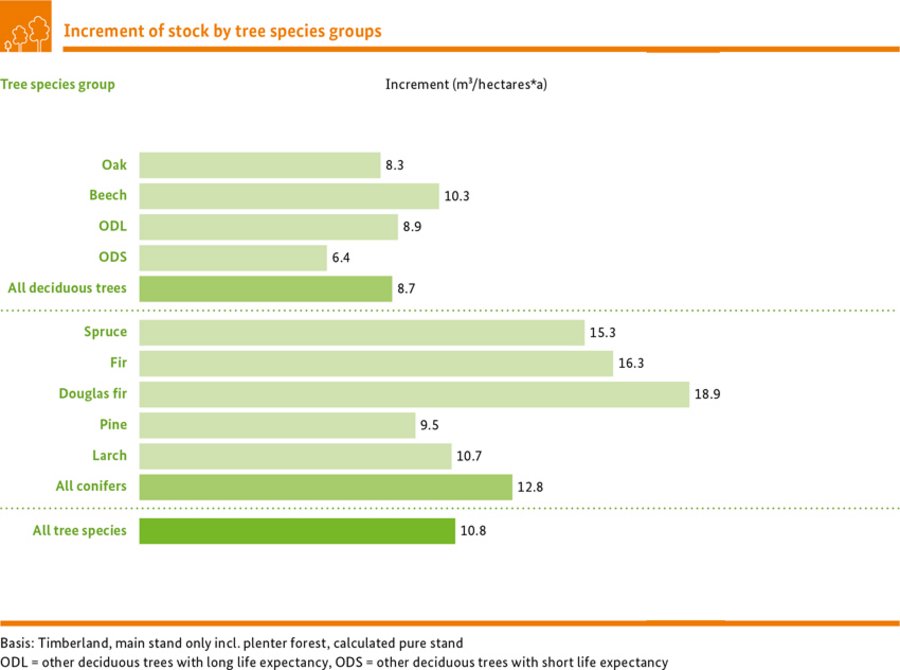However, the acceleration of growth observed in the 1990s (Spiecker, H., Mielikäinen, K., Köhl, M., Skovsgaard, J.P. (Eds.): Growth Trends in European Forests - Studies from 12 Countries. Springer, 1996) has not continued. Of the widespread tree species, the spruce grows the fastest with 15.3 cubic metres per year and hectare, followed by the beech with 10.3 cubic metres per year and hectare.
Although the Douglas firs with 18.9 cubic metres per year and hectare and firs with 16.3 cubic metres per year and hectare are the trees with the greatest increment, together they make up barely 4 % of the forest area.
The growth of a tree depends on the site conditions and the tree species-typical ageing process. Some tree species are fast growing and others are slow growing. For this reason, the age structure and the tree species composition of the forest determine the average timber increment. The presently high increment is therefore also a result of the many roughly 60-year-old post-war conifers planted in the 1950s. These forests are presently in their most productive stage.

